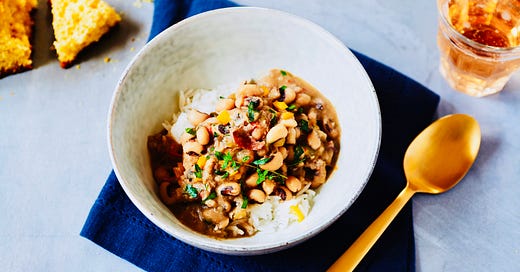Cooking up a New Year Begins with Black-eyed Peas - No. 177
They bring sustenance, flavor, thrift, and tradition for a happy, healthy 2023!
THE SOUTHERN FOOD WRITER Bill Neal called black-eyed peas a "gastronomic insurance policy."
A bit superstitious, yes, but I don’t think knocking on wood, throwing salt over your shoulder, or carrying a lucky penny are nearly as delicious.
It doesn’t matter if you start with dried, frozen, or canned. What matters is that you just s…




